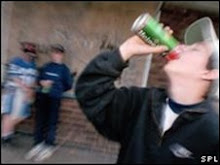.jpg)
“As a society of individuals we support the consumption of alcoholic beverages” (Beverage Alcohol Consumption in Canada). Historically alcohol has been used for relaxation, social purposes, ceremony and religion, nutrition, and was one of the primeval medicine known to man. The discovery or invention of alcohol and its existence is no doubt pertains to the special characteristics that alcohol processes. These widespread occurrences of alcohol use demonstrate that the use of alcohol is essentially ingrained in human behavior (Smith 1973 as cited in Simpson et al., 1985).
The historical origins of minimum drinking age laws in North America did not originally occur until the Temperance movement in the 1820s, as before this time it was not an integral component of the North American legislation. Before the Temperance movement the belief of the colonizing Americans was “alcohol was an essential part of life.” Liquor served a range of purposes and was commonly referred to as “the Good Creature of God” (Simpson et al., 1985). At the time actual drinking norms were set by the upper and upper-middle classes, and alcohol consumption was accepted in a variety of setting such as courtrooms and the place of work. Children were not excluded from these traditions and were even encouraged to drink at very early ages. There was only concern with very young individuals but there was no outright prohibited liquor, and drinking was usually at the parents discretion (Simpson et al., 1985).
At the beginning of the 19th century drinking patterns began to change as the excessive drinking caused embarrassing public displays of drunkenness, and the upper class began to refrain from these practices as drinking became associated with the working class. Liquor was beginning to be viewed as the cause for many social concerns and health issues, such as crime, violence, poverty, broken families and orphaned children, liver disease, ulcers, and madness to name a few. In response to this situation government created restrictions and the social philosophy swung from “perfecting human nature by removing laws” to “improving human society by passing laws” (Simpson et al., 1985). With this new movement towards government regulations came the Temperance Movement. This movement became the largest enduring middle-class movement of the 19th century, which created significant reforms in alcohol-control policy (Simpson et al., 1985). Legal hours of sale, as well as availability restrictions were such legislation that passed. Increasing concern for child welfare was reflected in a minimum drinking age law. The minimum drinking age became 21 years as this was considered adulthood. These laws also appeared to be designed to satisfy the Temperance Unionists (Simpson et al., 1985).
In the 1970s there was a complete examination of the legal position of youth. Since youth had increased participation in the economy and society there began a trend in reducing the minimum legal drinking age. The idea was that if young people are able to vote, quit school, join the military as well as other privileges and responsibilities of adulthood, then why should they not have the right to buy and consume alcohol (Simpson et al., 1985). Currently, the minimum legal drinking age laws in Canada vary among the provinces the age is 19 except in Manitoba, Alberta and Quebec where it is 18.


No comments:
Post a Comment